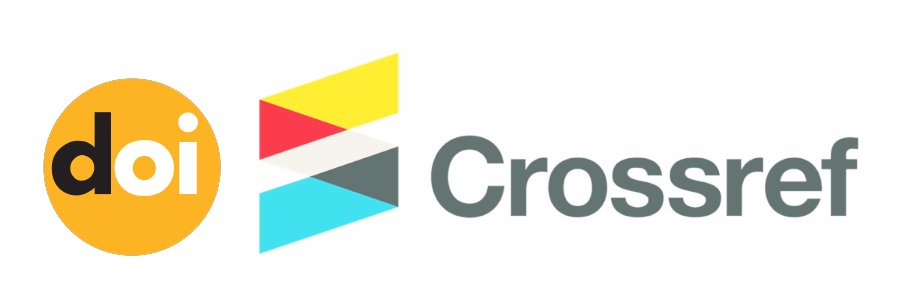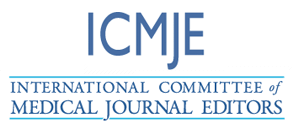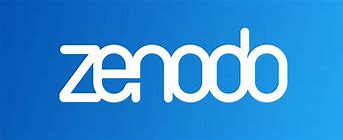The Correlation between HOMA-IR, QUICKI and HbA1c as predictors of type 2 diabetes in a Moroccan population
DOI:
https://doi.org/10.55677/IJCSMR/V5I1-08/2025Keywords:
HOMA-IR, QUICKI, insulin resistance, type 2 diabetesAbstract
Introduction : HOMA-IR and QUICKI are indexes that estimate insulin resistance and sensitivity.
Objective : This study assesses their correlation with HbA1c to determine their potential as predictors of type 2 diabetes.
Material and methods : The study group comprise 91 subjects divided into three subgroups: G0 (n=52) healthy individuals, G1 (n=21) subjects with controlled T2DM and G2 (n=18) subjects with unbalanced T2DM. The HOMA-IR and QUICKI indices are calculated using a mathematical formula based on fasting blood glucose and insulin levels.
Results : The correlation between HbA1c and HOMA-IR showed a significant correlation in all 3 groups of patients : G0 (r = 0.47, p < 10-3), G1 (r = 0.42, p = 0,05) et G2 (r = 0.81, p < 10-3). Moderate correlations were found in groups G0 and G1 : G0 (r = 0.47, p < 10-3), G1 (r = 0.42, p =0,05). A weak correlation was found in group G2.
Conclusion : HOMA-IR and QUICKI show potential as early indicators of the onset of type 2 diabetes. Their use could improve the screening.
References
Saeedi P, Petersohn I, Salpea P, Malanda B, Karuranga S, Unwin N, Colagiuri S, Guariguata L, Motala AA, Ogurtsova K, Shaw JE, Bright D, Williams R; IDF Diabetes Atlas Committee. Global and regional diabetes prevalence estimates for 2019 and projections for 2030 and 2045: Results from the International Diabetes Federation Diabetes Atlas, 9th edition. Diabetes Res Clin Pract 2019 ;157 :107843
DeFronzo RA, Ferrannini E: Insulin resistance: a multifaceted syndrome responsible for NIDDM, obesity, hypertension, dyslipidaemia and atherosclerotic cardiovascular disease. Diabetes Care 14:173-194,1991
Al-Hakeim HK, Abdulzahra MS: Correlation between glycated haemoglobin and Homa indices in type 2 diabetes mellitus: prediction of beta-cell function from glycated haemoglobin. J Med Biochem. April 2015; 34(2): 191-199.
Khaw KT, Wareham N, Luben R, Bingham S, Oakes S, Welch A, et al. Glycated haemoglobin, diabetes and mortality in men in the Norfolk cohort of the European Prospective Investigation into Cancer and Nutrition (EPIC-Norfolk) BMJ. 2001 ; 322 : 15-26.
Mirzaalian Y, Nourian M et al. Association of quantitative insulin sensitivity indices (HOMA-IR and QUICKI) with anthropometric and cardiometabolic indicators in adolescents. Arch Med Sci Atheroscler Dis. 2019; 4: e32-e37.
El harb djoghlaf D, Rahal L et al. Evaluation of insulin resistance by the HOMA index in 1st degree relatives with type 2 diabetes.
Haute Autorité de Santé. Type 2 diabetes in adults. Guide parcours de soin. Saint-Denis La Plaine: HAS; 2014.
Haute Autorité de Santé. Therapeutic strategy for patients living with type 2 diabetes. Saint-Denis La Plaine: HAS; 2024.
Correlation between glycated haemoglobin and Homa indices in type 2 diabetes mellitus: prediction of beta-cell function from glycated haemoglobin. J Med Biochemistry. april 2015; 34(2): 191-199.
Kilpatrick ES, Dominiczak MH, Small M. The effects of ageing on glycation and the interpretation of glycaemic control in Type 2 diabetes. QJM, 1996 ; 89(4) : 307-312.
Radziuk J. Insulin sensitivity and its measurement: structural commonalities among the methods. J Clin Endocrinol Metab, 2000, 85: 4426-4433.
Matthews DR, Hosker JP, Rudenski AS, Naylor BA, Teacher DF, Turner RC. Évaluation du modèle d'homéostasie : résistance à l'insuline et fonction des cellules B à partir de la glycémie à jeun et de la concentration d'insuline chez l'homme. Diabetologia. 1985 ; 28 : 412-19.
Chen M., Bergman RN., Pacini G., Porte D. Jr. Pathogenesis of age-related glucose intolerance in man : insulin resistance and decreased beta-cell function. J Clin Endocrinol Metab, 1985 60 : 13-20.
Basu R., Dalla Man C., Campioni M., Basu A., Klee G., Toffolo G., Cobelli C., Rizza RA. Effects of age and sex on postprandial glucose metabolism : differences in glucose turnover, insulin secretion, insulin action, and hepatic insulin extraction.Diabetes, 2006,55 : 2001-2014.
Ferrannini E., Vichi S., Beck-Nielsen H., Laakso M., Paolisso G., Smith U. Insulin action and age. Groupe européen pour l'étude de la résistance à l'insuline (EGIR). Diabetes, 1996, 45 :947-953.
Basu R., Breda E., Oberg AL., Powell CC., Dalla Man C., Basu A., Vittone JL., Klee GG.,
Arora P., Jensen MD., Toffolo G., CobelliC,Rizza RA. Mechanisms of the age-associated deterioration in glucose tolerance: contribution of alterations in insulin secretion, action, and clearance. Diabetes, 2003, 52 : 1738-1748.
Szoke E., Shrayyef MZ., Messing S., Woerle HJ., Van Haeften TW., Meyer C., Mitrakou A.Pimenta W., Gerich JE. Effect of aging on glucose homeostasis: accelerated deterioration of bêta-cell function in individuals with impaired glucose tolerance. Diabetes Care, 2008, 31 :539-543.
Pitteloud N., Mootha VK., Dwyer AA., Hardin M., Lee H., Eriksson KF., Tripathy D., Yialamas M., Groop L., Elahi D., Hayes FJ. Relationship between testosterone levels, insulin sensitivity, and mitochondrial function in men. Diabetes Care, 2005, 28(7) : 1636-1642.
Downloads
Published
Issue
Section
License
Copyright (c) 2025 International Journal of Clinical Science and Medical Research

This work is licensed under a Creative Commons Attribution 4.0 International License.











